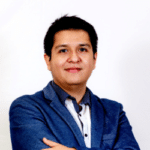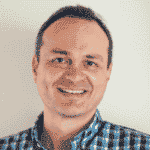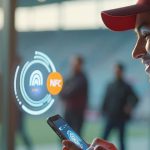For many health care providers (HCPs), the best patient is an engaged patient.
People who are active participants in their care tend to make better, more informed decisions and adhere to treatment programs more closely. This can lead to stronger health outcomes and lower costs for patients while helping to optimize the limited health resources for the system as a whole.
But in a traditional healthcare system, engagement often wanes over time since communication and collaboration between HCPs and patients can be difficult to achieve outside of a hospital or clinical setting. As patient roles expand, doctors and their staff often lack the bandwidth to send regular, customized reminders to patients to continuously monitor their health indicators. Meanwhile, patients, often facing extreme health care costs, may be hesitant to contact their physician for what they perceive to be a minor or inconsequential issue.
The result? Skipped medications, overlooked warning signs, and delayed diagnoses – all of which can contribute to a higher cost of care as health conditions become more complex to manage due to delayed interventions.
Revolutionizing care through remote patient monitoring and omnichannel communication with Salesforce
In recent years, healthcare providers have begun to leverage digital technologies, such as the Salesforce platform, and Health Cloud in particular, to enable patients to access information and resources, personalize their experience, and empower them to become active participants in their care.
While Salesforce is extremely effective in helping PCPs develop and disseminate customized messages to their patients, that functionality only scratches the surface of what the platform can do. With relatively simple customizations, the tool can become even more effective and efficient in automating personalized messages, as well as managing the other half of the communication cycle – acting on responses from patients and the data produced by their connected devices.
As HCPs and providers work to expand and enhance their patient communication and monitoring capabilities, our Globant experts share seven system requirements HCPsshould incorporate to help deliver on the promise of patient-centered or value-driven care models.
7 must have functions of every remote health monitoring system
1.Omnichannel communication capabilities
- Does the monitoring solution allow communication across various channels, such as text, WhatsApp, Facebook Messenger, patient portal, etc., at any time?
- Can the patient or PCP switch channels at will and maintain a complete record of past interactions?
2. Monitoring Program Management
- Does the solution allow physicians to design the monitoring program based on patient segments and risk analysis?
- Does the system have the ability to create cohorts of patients and define vital signs, such as blood pressure, heart rate, glucose levels, oxygen saturation, etc., that need to be monitored?
3. Two-way communication
- Does the solution support communication initiated by either party?
- Does each party have the opportunity to reply and follow up at any time?
- Is the user experience intuitive, even for people with limited digital skills?
4. Automated campaign elements and priority alerting
- Can the system automatically follow up on outstanding messages?
- Can the system automatically trigger a high-priority alert or follow up action if a patient’s observation is out of the expected range?
5.Personalized communication and customized data parameters
- Can the solution support customization efforts to personalize and tailor messages for patients?
- Can the PCP automatically flag select messages for follow-up, based on keyword or personalized health monitoring data?
6.Responsive capabilities
- Does the communication system have the ability to automatically create a detailed case if a patient’s health monitoring results fall outside of the acceptable range specified for them?
- Can the system provide positive feedback to patients who are active and engaged?
7.Security and compliance
- Does the platform comply with regulatory standards regarding data security and privacy, including HIPAA?
- To what extent can the platform automate regulatory reporting and compliance activity?
Achieving the next level of engagement with Globant’s Omnichannel Remote Patient Monitoring Accelerator
Enabling a remote monitoring and communication platform is one way for HCPs to help address some of the most pressing challenges facing their businesses and the healthcare system. With this capability, it is possible to expand access to care, provide better, more personalized care (especially to people with limited mobility), improve treatment adherence and patient engagement – all while lowering the cost to serve.
Incorporating this function into your practice can be simpler than you think with Globant’s Omnichannel Patient Monitoring Accelerator. This non-native app, built on the Salesforce Health Cloud platform, helps healthcare organizations optimize limited resources and deliver on the promise of patient-centered care, especially when patients are outside hospitals and not connected through an IoT-enabled monitoring device.
Flexible and scalable, the Accelerator provides healthcare providers and payers/insurers with an intuitive interface that enables them to rapidly personalize the patient experience through customized alerts and tracking functions, two-way, omnichannel communication, real-time data analysis, and automated follow-up. Best of all, the non-native app is fully deployable in Salesforce Health Cloud in just two weeks, which means HCPs can start generating value from their investment almost immediately.
| Enable a remote monitoring and communication function in just two weeks with Globant and Salesforce
With our flexible, scalable Omnichannel Patient Monitoring Accelerator healthcare providers can:
|
Delivering on the promise of patient-centered care
As health care costs continue to rise and many regions face critical shortages of healthcare professionals, it is important for HCPs to find new ways to effectively optimize resources and streamline processes, while also improving patient care. One way to significantly address all of these issues is by enabling a robust remote monitoring and communication platform in Salesforce.
Not an expert in Salesforce? Not to worry! Our HLS and Salesforce experts are here to help HCPs quickly and easily build and deploy these capabilities. Contact our team to experience our demo and see what the next generation of patient communication and engagement looks like with the Omnichannel Patient Monitoring Accelerator from Globant.





